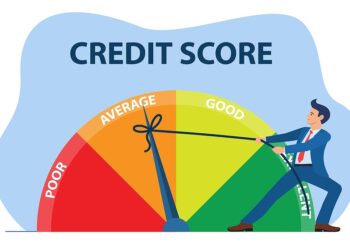The financial landscape is witnessing an unprecedented phenomenon: a youth investing boom. Gone are the days when investing was solely the domain of seasoned professionals or older generations. Today, driven by digital accessibility, a wealth of online information, and a growing understanding of long-term wealth creation, young people are entering the investment arena with enthusiasm. This isn’t just a trend; it’s a powerful shift poised to redefine financial independence for a new generation. Understanding the drivers, opportunities, and smart strategies within this boom is crucial for young individuals seeking to leverage their most valuable asset – time – to build significant wealth. This comprehensive guide will explore the multifaceted aspects of youth investing, offering actionable insights for building a robust portfolio from an early age, specifically considering the context of Indonesia.
The Rise of Youth Investors

Several factors have converged to ignite this surge in young people taking control of their financial futures. This paradigm shift marks a significant departure from previous generations’ approaches to money.
A. Digital Accessibility and User-Friendly Platforms
The internet and mobile technology have democratized investing, breaking down barriers that once existed.
A. Mobile Trading Apps: User-friendly applications on smartphones make it incredibly easy to open brokerage accounts, execute trades, and monitor investments with just a few taps. Platforms like Bibit, Ajaib, Bareksa, and Stockbit in Indonesia have made investing accessible even for beginners, often with low minimum deposits.
B. Fractional Share Investing: The ability to buy fractions of expensive stocks (e.g., Google, Amazon) means young investors with limited capital can still own pieces of blue-chip companies, allowing for diversification with smaller amounts. While this is more common in developed markets, the concept is gaining traction or is indirectly accessible through certain mutual funds in Indonesia.
C. Robo-Advisors: Automated investment platforms (like Bibit or Bareksa, which offer robo-advisory features for mutual funds) use algorithms to manage portfolios based on an investor’s goals and risk tolerance. They offer low fees, automated rebalancing, and professional diversification, making investing simple and accessible for those new to the market.
D. Educational Content: The internet is flooded with free educational content – blogs, YouTube channels, podcasts, social media influencers – that demystify investing, making it less intimidating for young people to learn the ropes.
B. Growing Financial Literacy and Awareness
Young people today are more aware of the importance of financial planning and long-term wealth creation than ever before.
A. Early Financial Education: While formal financial education might still be lacking in some curricula, social media and online resources are filling the gap, educating young people about concepts like compounding, inflation, and diversification much earlier.
B. Peer Influence: Discussions about investing, side hustles, and financial independence are prevalent on social media platforms, creating a community of like-minded young investors who share knowledge and motivate each other.
C. Post-Pandemic Financial Reflection: The economic uncertainties of recent years have prompted many young people to re-evaluate their financial security and seek ways to build resilience and generate passive income.
C. The Power of “Time in the Market”
Young investors possess an invaluable advantage: time. This allows them to fully harness the magic of compounding.
A. Compounding Advantage: Money invested early has significantly more time for its earnings to generate their own earnings, leading to exponential growth. Even small, consistent contributions made in your 20s can far surpass much larger contributions made starting in your 40s or 50s. This is the single most compelling reason for youth to invest.
B. Riding Out Volatility: A longer time horizon allows young investors to weather short-term market downturns, as history shows that markets tend to recover and grow over decades. They have the luxury of waiting out bear markets.
C. Lower Monthly Contributions: To reach a significant retirement goal, starting early means you can achieve it with smaller, more manageable monthly contributions compared to playing catch-up later in life.
D. Desire for Financial Independence (FIRE Movement)
The rise of the FIRE (Financial Independence, Retire Early) movement has resonated strongly with younger generations. The desire to escape the traditional nine-to-five grind and gain control over their time is a powerful motivator for aggressive saving and investing from an early age.
Core Strategies for Young Investors

While the allure of quick gains can be tempting, young investors should focus on tried-and-true strategies that emphasize long-term growth and risk management.
A. Prioritize Building an Emergency Fund
Before making significant investments, establish a robust emergency fund. This is non-negotiable.
A. Goal: Save 3-6 months’ worth of essential living expenses. For those with less stable income or who are new to the workforce, aiming for 6-12 months might be wiser.
B. Location: Keep this fund in an easily accessible, liquid account like a high-yield savings account or a money market fund. In Indonesia, consider high-yield conventional or Sharia savings accounts from reputable banks (covered by LPS – Lembaga Penjamin Simpanan up to a certain limit).
C. Purpose: This fund prevents you from needing to sell investments at a loss during unexpected financial shocks (e.g., job loss, medical emergency, car repair), preserving your long-term portfolio.
B. Conquer High-Interest Debt First
High-interest consumer debt, such as credit card debt or personal loans, can erode wealth faster than investments can grow it.
A. Aggressive Repayment: Prioritize paying off these debts with any extra income. The interest saved is a guaranteed, risk-free return, often higher than what you could earn from investing.
B. Debt Avalanche/Snowball: Use the debt avalanche method (highest interest rate first) to save the most money, or the debt snowball (smallest balance first) for psychological momentum.
C. Avoid New Bad Debt: Be disciplined and avoid accumulating new high-interest debt once you start your debt-free journey.
C. Leverage Tax-Advantaged Accounts
These accounts offer significant tax benefits that can dramatically accelerate wealth accumulation. While specific account types vary by country, the principle remains: save where the government gives you a tax break.
A. Employer-Sponsored Plans (e.g., DPPK, JP in Indonesia): If your employer offers a private pension fund (Dana Pensiun Pemberi Kerja – DPPK) or you contribute to Jaminan Pensiun (JP) via BPJS Ketenagakerjaan, maximize your contributions. If there’s an employer match, contribute at least enough to get the full match – it’s free money. These funds often offer tax-deferred growth.
B. Individual Retirement Funds (e.g., DPLK in Indonesia): Consider opening a voluntary pension fund like Dana Pensiun Lembaga Keuangan (DPLK). These allow individuals to save for retirement with professional management and typically offer tax-exempt growth until withdrawal in retirement.
C. Investment-Linked Insurance Products (Unit Link): While primarily insurance, some Unit Link products in Indonesia have a significant investment component where growth can be tax-exempt under certain conditions. Understand the fees involved carefully.
D. Focus on Low-Cost, Diversified Investments
For most young investors, especially beginners, simplicity and broad diversification are key.
A. Index Funds and ETFs: These are ideal for long-term growth. They offer instant diversification across a broad market or specific sectors with very low expense ratios. In Indonesia, you can find Reksa Dana Indeks (Index Mutual Funds) or Exchange Traded Funds (ETFs) that track indices like the LQ45 or IDX30.
B. Broad Market Exposure: Don’t try to pick individual winning stocks unless you’re willing to dedicate significant time to research and accept higher risk. Instead, invest in funds that track the overall market.
C. Global Diversification: Consider funds that offer exposure to international markets. This reduces country-specific risk and allows you to tap into growth opportunities worldwide.
E. Practice Dollar-Cost Averaging
This strategy involves investing a fixed amount of money at regular intervals, regardless of market fluctuations.
A. Automated Discipline: Set up automatic monthly or bi-weekly investments. This ensures consistent contributions and removes emotional decision-making.
B. Mitigates Volatility: By investing consistently over time, you buy more shares when prices are low and fewer when prices are high, averaging out your purchase price and reducing the risk of making a large investment just before a market downturn.
Advanced Considerations for Youth Investing
Once the foundational strategies are in place, young investors can explore more nuanced approaches.
A. Understanding Risk Tolerance and Time Horizon
While youth generally affords a higher risk tolerance due to a longer time horizon, personal comfort levels vary.
A. Longer Time Horizon: Young investors have decades until retirement, allowing them to take on more equity risk, which has historically offered higher returns.
B. Personal Risk Tolerance: Be honest about how you react to market volatility. If seeing your portfolio drop causes significant anxiety, a slightly more conservative approach might be better for your peace of mind, even if it means potentially lower returns.
C. Asset Allocation Glide Path: As you age and your time horizon shortens, gradually shift your portfolio from a higher allocation to stocks towards a more conservative mix including bonds to preserve capital.
B. Exploring Alternative Investments (with Caution)
The youth investing boom has also seen interest in alternative assets. Approach these with extensive research and a clear understanding of their risks.
A. Cryptocurrencies: Digital assets like Bitcoin and Ethereum offer potential for high returns but are extremely volatile and speculative. Only invest a small percentage of your portfolio that you can afford to lose. Understand the technology and market dynamics deeply.
B. Real Estate Crowdfunding: Platforms that allow fractional ownership in real estate projects can be an entry point into the property market with smaller capital. However, these often come with illiquidity and specific project risks.
C. Peer-to-Peer (P2P) Lending: Lending money directly to individuals or small businesses for interest. This can offer higher returns than traditional savings but carries default risk. In Indonesia, there are regulated P2P lending platforms like Modalku (Funding Societies) or Investree.
D. Creating and Investing in Your Own Business/Side Hustle: This can be one of the most rewarding “investments,” leveraging your time and skills for potentially unlimited income. Many successful entrepreneurs started with a side hustle.
C. Tax Efficiency and Optimization
Understanding how taxes impact your investments is crucial for maximizing net returns.
A. Utilize Tax-Advantaged Accounts: As previously mentioned, prioritize DPLK, DPPK, and potentially Unit Link products in Indonesia for their tax benefits.
B. Understand Capital Gains Tax: In Indonesia, stock transactions are subject to a final tax on transaction value (0.1%). Dividends received can also be subject to income tax. Be aware of these implications for taxable brokerage accounts.
C. Tax-Loss Harvesting (advanced): In some jurisdictions, you can sell investments at a loss to offset capital gains and potentially a limited amount of ordinary income, reducing your tax bill. Consult a tax professional for specific rules in Indonesia.
D. The Importance of Continuous Learning
The financial world is dynamic. Staying informed is a continuous process.
A. Read Reputable Sources: Follow financial news from trusted outlets, read books on investing and personal finance, and subscribe to educational newsletters.
B. Leverage Online Courses and Webinars: Many platforms offer free or affordable courses to deepen your financial knowledge.
C. Understand Economic Trends: Be aware of how macroeconomic factors (inflation, interest rates, global events) can influence your investments.
Overcoming Challenges for Young Investors
Despite the advantages, young investors face unique hurdles that need to be addressed.
A. Limited Capital and Competing Financial Priorities
Young investors often have smaller disposable incomes and multiple competing financial goals (e.g., student loans, starting a family, buying a home).
A. Start Small, Stay Consistent: Even investing Rp100,000 or Rp500,000 monthly can build significant wealth over decades due to compounding. The consistency is more important than the initial amount.
B. Budgeting Discipline: A strict budget can help free up extra cash for investing, even from a modest income. Prioritize “paying yourself first.”
C. Side Hustles: Generate extra income through side hustles to boost your investment contributions.
B. High Student Loan Debt (where applicable)
For young people burdened with student loans, managing this debt while investing can be a challenge.
A. Balance Debt and Investing: For high-interest student loans, prioritizing repayment often makes sense. For low-interest loans, a balanced approach of making minimum payments while investing can be more beneficial, especially if employer-matched retirement contributions are available.
B. Explore Repayment Options: Investigate income-driven repayment plans or refinancing options (if beneficial) to manage student loan payments.
C. Emotional Investing and Market Volatility
Market downturns can be particularly unnerving for new investors, leading to impulsive decisions.
A. Long-Term Perspective: Remember that market corrections are normal. Avoid panic selling during downturns. Instead, view them as opportunities to buy more assets at lower prices.
B. Automate Investments: Dollar-cost averaging helps remove emotion by enforcing consistent investing regardless of market conditions.
C. Focus on Your Plan: Stick to your pre-defined investment strategy and asset allocation.
D. Avoiding “Get Rich Quick” Schemes
The allure of rapid wealth can lead young investors to risky, unproven ventures or outright scams.
A. Due Diligence: Always research thoroughly before investing in anything. If it sounds too good to be true, it almost certainly is.
B. Understand Risk: Be skeptical of promises of guaranteed high returns with no risk. All investments carry some level of risk.
C. Diversify: Avoid putting a large percentage of your portfolio into highly speculative assets.
Conclusion
The youth investing boom is a powerful testament to a generation taking proactive control of their financial destinies. Armed with digital tools, accessible information, and a keen understanding of the power of time, young investors are uniquely positioned to build substantial wealth and achieve financial independence earlier than previous generations.
By prioritizing an emergency fund, conquering high-interest debt, leveraging tax-advantaged accounts (like DPLK and DPPK in Indonesia), and focusing on low-cost, diversified investments such as Index Funds and ETFs on the IDX, you can establish a robust foundation for growth. Remember the magic of compounding and the discipline of dollar-cost averaging.
While challenges like limited capital and market volatility exist, a strategic approach, continuous learning, and a patient mindset will empower you to overcome them. This is more than just investing; it’s about building a future where your financial freedom dictates your choices, not your paycheck. Start today, stay consistent, and unlock the immense potential of investing early.












